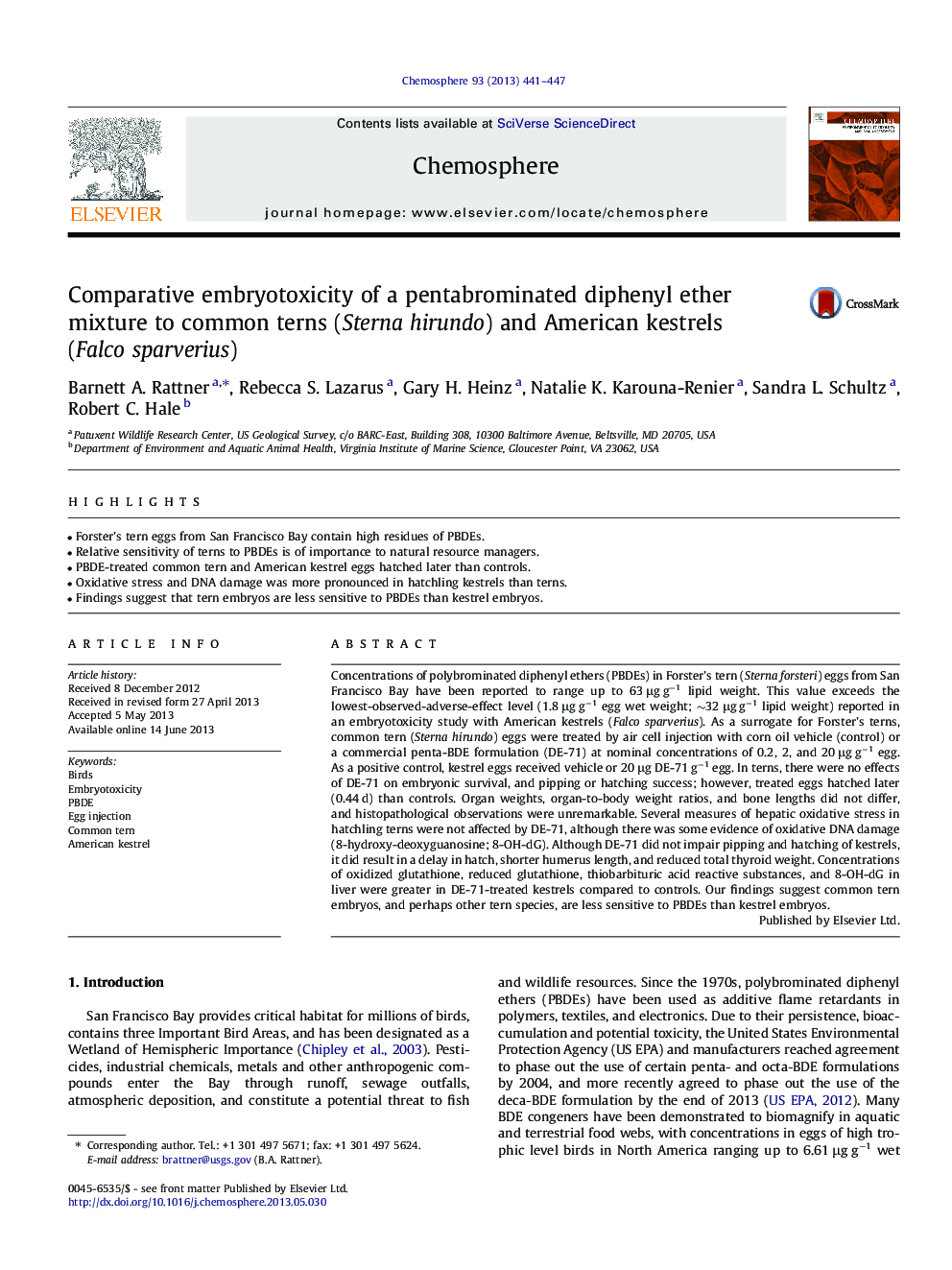| کد مقاله | کد نشریه | سال انتشار | مقاله انگلیسی | نسخه تمام متن |
|---|---|---|---|---|
| 6310593 | 1307471 | 2013 | 7 صفحه PDF | دانلود رایگان |
عنوان انگلیسی مقاله ISI
Comparative embryotoxicity of a pentabrominated diphenyl ether mixture to common terns (Sterna hirundo) and American kestrels (Falco sparverius)
دانلود مقاله + سفارش ترجمه
دانلود مقاله ISI انگلیسی
رایگان برای ایرانیان
کلمات کلیدی
موضوعات مرتبط
علوم زیستی و بیوفناوری
علوم محیط زیست
شیمی زیست محیطی
پیش نمایش صفحه اول مقاله

چکیده انگلیسی
Concentrations of polybrominated diphenyl ethers (PBDEs) in Forster's tern (Sterna forsteri) eggs from San Francisco Bay have been reported to range up to 63 μg gâ1 lipid weight. This value exceeds the lowest-observed-adverse-effect level (1.8 μg gâ1 egg wet weight; â¼32 μgâ1 lipid weight) reported in an embryotoxicity study with American kestrels (Falco sparverius). As a surrogate for Forster's terns, common tern (Sterna hirundo) eggs were treated by air cell injection with corn oil vehicle (control) or a commercial penta-BDE formulation (DE-71) at nominal concentrations of 0.2, 2, and 20 μg gâ1 egg. As a positive control, kestrel eggs received vehicle or 20 μg DE-71 gâ1 egg. In terns, there were no effects of DE-71 on embryonic survival, and pipping or hatching success; however, treated eggs hatched later (0.44 d) than controls. Organ weights, organ-to-body weight ratios, and bone lengths did not differ, and histopathological observations were unremarkable. Several measures of hepatic oxidative stress in hatchling terns were not affected by DE-71, although there was some evidence of oxidative DNA damage (8-hydroxy-deoxyguanosine; 8-OH-dG). Although DE-71 did not impair pipping and hatching of kestrels, it did result in a delay in hatch, shorter humerus length, and reduced total thyroid weight. Concentrations of oxidized glutathione, reduced glutathione, thiobarbituric acid reactive substances, and 8-OH-dG in liver were greater in DE-71-treated kestrels compared to controls. Our findings suggest common tern embryos, and perhaps other tern species, are less sensitive to PBDEs than kestrel embryos.
ناشر
Database: Elsevier - ScienceDirect (ساینس دایرکت)
Journal: Chemosphere - Volume 93, Issue 2, September 2013, Pages 441-447
Journal: Chemosphere - Volume 93, Issue 2, September 2013, Pages 441-447
نویسندگان
Barnett A. Rattner, Rebecca S. Lazarus, Gary H. Heinz, Natalie K. Karouna-Renier, Sandra L. Schultz, Robert C. Hale,